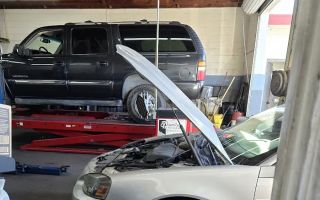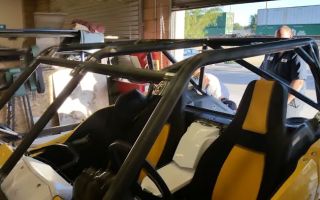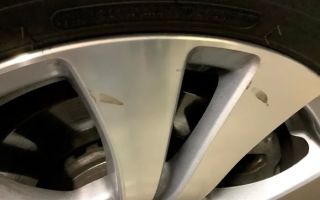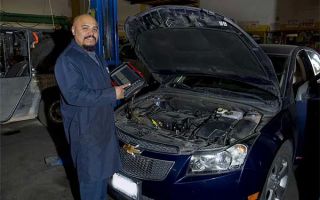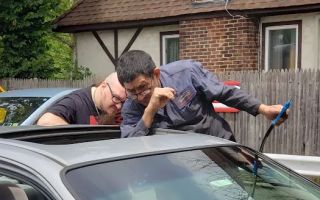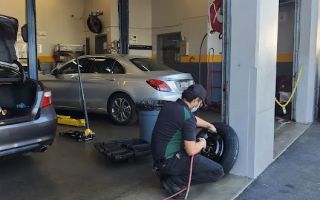How to Get Your Car Started When It Won’t Turn Over
It’s a frustrating moment that almost every driver has faced at some point: you turn the key (or press the button), and your car engine won’t start. You hear a faint clicking sound, or nothing at all, but the car simply refuses to turn over. It’s a situation that can ruin your day, especially if you’re in a hurry, and it can be even more alarming if you’re in an unfamiliar area or far from home. But don’t panic just yet – understanding why your car won’t start and knowing how to troubleshoot can make all the difference. I’ve been in this situation more times than I’d like to admit, and through trial and error, I’ve learned several key techniques to help get my car running again. In this article, I’ll walk you through the steps I take when faced with a car that won’t turn over and offer some advice on when to call for professional help.
Getting your car started when it won’t turn over requires a combination of understanding the potential causes of the issue, using the right tools, and knowing when to ask for professional assistance. As someone who’s had my fair share of car problems on the road, I know that having the right knowledge at your fingertips can make a stressful situation much easier to handle. Let’s dive into the different steps you can take to troubleshoot and resolve the issue.

Pick Your Part - Help Yourself
1232 Blinn Ave, Wilmington, CA 90744, USA
1. Check the Battery for Issues
The first thing I always check when my car won’t start is the battery. A dead or weak battery is one of the most common reasons a car won’t turn over. If your battery is weak, it might not have enough power to get the engine running. The symptoms are often clear: your car might make a clicking sound, or the dashboard lights may flicker or not turn on at all. If this happens, the battery is the first suspect.
Here’s what I do to diagnose the issue:
- Inspect the Dashboard Lights: When the battery is low, you’ll often see dim lights or no lights at all when you try to start the car. If your dashboard lights are dead or weak, the battery is likely to blame.
- Check for a Clicking Noise: When you turn the key, listen carefully for a clicking noise. This is typically a sign that the battery is not supplying enough power to start the engine.
- Try Jump-Starting: If you have jumper cables and access to another vehicle, jump-starting your car might be the easiest way to get it started again. Connect the positive and negative terminals properly and see if the engine starts.
If the jump-start works, it’s likely your battery. But if it doesn’t, the issue could be more complicated. I’ve had situations where my battery looked fine, but it wasn’t giving enough juice to the starter motor. In these cases, replacing the battery is often the solution.

Pick Your Part - Greer
13054 E Wade Hampton Blvd, Greer, SC 29651, USA
2. Inspect the Starter Motor
Another possible culprit when your car won’t turn over is the starter motor. The starter motor is what actually gets the engine running by turning the flywheel. If the starter motor fails, your engine won’t start at all. In fact, I’ve had a situation where the battery was fine, but the starter motor had completely failed. When this happens, you won’t hear any clicking noise at all; instead, it’ll just be silent.
Here’s how to check the starter motor:
- Listen for Any Sound: When you turn the key, if you hear a grinding noise or no noise at all, this could be a sign that the starter motor is malfunctioning.
- Check for Electrical Issues: If the battery is good but there’s no power going to the starter, you may have an electrical issue. Check the wiring going to the starter motor and see if any wires are disconnected or loose.
- Tap the Starter Motor: Sometimes, tapping the starter motor with a hammer can loosen up a stuck part. I’ve had success with this method in emergency situations, although it’s more of a temporary fix.
If the starter motor is bad, it’s best to replace it as soon as possible. It’s one of the components that I’ve had to replace on a few occasions, but once it was done, the car ran like new again. If you’re not comfortable diagnosing or replacing the starter motor yourself, you can call for professional help.
3. Examine the Fuel System
If your battery and starter motor are in good condition, but your car still won’t start, it might be time to check the fuel system. A clogged fuel filter, faulty fuel pump, or empty fuel tank can prevent your car from getting the fuel it needs to run. This happened to me once, and I was stuck on the side of the road, convinced that my car had died, only to realize I had run out of gas!
Here’s how to diagnose fuel system issues:
- Check the Fuel Gauge: I always start by checking the fuel gauge to make sure I didn’t simply run out of gas. It might sound obvious, but it’s easy to miss in the heat of the moment!
- Listen for the Fuel Pump: Turn the ignition key to the “on” position (without starting the engine) and listen for a buzzing sound from the fuel pump. If you don’t hear anything, the fuel pump might be the issue.
- Inspect the Fuel Filter: A clogged fuel filter can prevent the engine from getting the fuel it needs. If the fuel filter is clogged, you may need to replace it to get the car started.
In my experience, once I diagnosed the issue as a fuel problem, the solution was often simple. If I was out of gas, I’d fill up the tank, and if the fuel filter was clogged, I’d replace it. However, fuel pump issues can be more complex, and I’d recommend professional help in that case.
4. Look for Electrical System Problems
Another important factor in troubleshooting a car that won’t start is checking for electrical system issues. The ignition system, fuses, and relays are all connected to starting the car. If there’s a problem in any of these areas, it could prevent the engine from turning over.
Here’s what I check when troubleshooting electrical issues:
- Inspect the Fuses: If the fuse for the starter motor or ignition system is blown, the car won’t start. I’ve had this happen before, and it’s a simple fix: just replace the fuse with one of the same amperage.
- Test the Ignition Switch: The ignition switch sends power to the starter motor. If the switch is faulty, the car may not start. I’ve had an instance where the ignition switch was worn out, and replacing it solved the issue.
- Check the Battery Cables: Loose or corroded battery cables can also cause starting issues. Make sure the battery cables are securely connected and free from corrosion.
Electrical problems can be tricky to diagnose, but once I figured out that a blown fuse was the culprit, it was a quick and easy fix. For more complex electrical issues, such as faulty ignition systems, I always recommend calling a professional mechanic.
5. When to Call for Towing Assistance
Despite all your best efforts, sometimes your car just won’t start, and it’s time to call for professional help. If you’ve gone through the troubleshooting steps and your car still won’t turn over, you may need to have it towed to a repair shop. I’ve been in this situation more than once, and I always recommend calling a towing service like Rescue & Towing when you’re stuck and unsure of what to do next. It’s better to get the car to a professional who can properly diagnose and repair the issue.
Whether you’re dealing with a dead battery, a faulty starter motor, or a more complex mechanical issue, having reliable towing assistance can save you a lot of frustration. I’ve called on towing services multiple times, and they’ve always been a lifesaver when I was stranded with a car that wouldn’t start.
6. Prevent Future Issues with Regular Maintenance
Once your car is running again, it’s a good idea to prevent future problems by performing regular maintenance. Regular check-ups, such as battery inspections, fuel system checks, and electrical system maintenance, can help ensure your car starts when you need it. I’ve found that keeping an eye on these areas and replacing parts before they fail can save me a lot of time and money in the long run.
If you’re unsure about how to maintain your car, or if you’d prefer to leave it to the professionals, consider scheduling regular visits with a trusted mechanic. They can help ensure that your car is in top shape and prevent issues like the ones I’ve encountered from happening in the first place.


